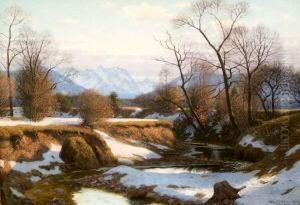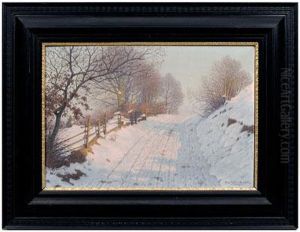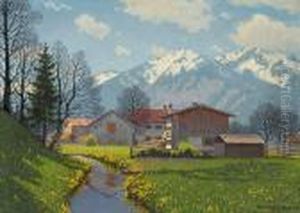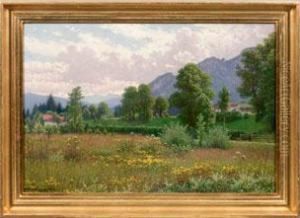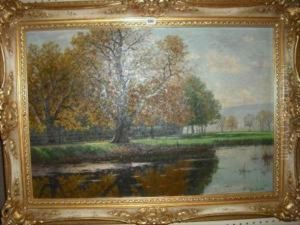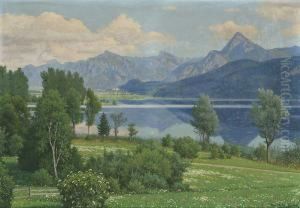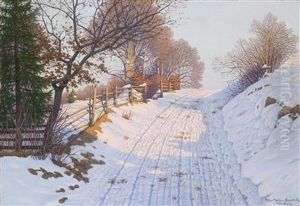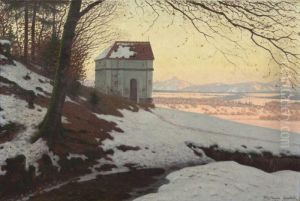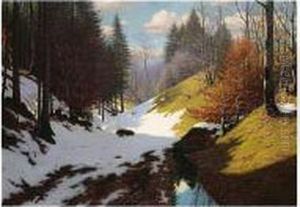Fritz Muller-Landeck Paintings
Fritz Müller-Landeck, born in 1865, was a German painter and printmaker, primarily known for his landscape paintings and etchings. He was part of the late 19th and early 20th-century European art scene, a period that witnessed significant transformations due to the impacts of modernism and the various art movements that emerged during this time. Müller-Landeck's work was influenced by the prevailing trends of his era, including Impressionism and Post-Impressionism, which were characterized by a focus on light, color, and the artist's subjective interpretation of nature.
Müller-Landeck received his formal education in art at the Prussian Academy of Arts in Berlin, where he was trained in the traditional academic style. However, like many of his contemporaries, he was drawn to the innovations of Impressionist painters who were exploring new ways of depicting light and atmosphere. He developed a style that fused the detailed realism of his academic training with the looser brushwork and lighter palette of the Impressionists. His landscapes and cityscapes often captured the fleeting effects of light and weather, lending his work a sense of immediacy and dynamism.
Throughout his career, Müller-Landeck exhibited his work widely and participated in numerous shows, including those organized by the Berlin Secession, an influential group of artists who broke away from the conservative art establishment to promote more progressive forms of art. His etchings and prints were particularly well-received, and he was known for his technical skill in these media. Müller-Landeck's etchings often featured the same themes as his paintings, focusing on the landscapes and urban environments of Germany and other parts of Europe.
Despite the quality of his work and his participation in important artistic circles, Müller-Landeck did not achieve the same level of fame as some of his contemporaries. His work, however, has continued to be appreciated by collectors and art historians for its contribution to the landscape genre and for the way it reflects the broader developments in European art at the turn of the century.
Fritz Müller-Landeck's career spanned a period of great change in the art world, and his work provides a window into the transition from traditional academic art to the more experimental and individualistic approaches that defined early modernism. He died in 1940, leaving behind a body of work that continues to be studied and admired for its technical skill and its evocative portrayal of the natural and built environment.
